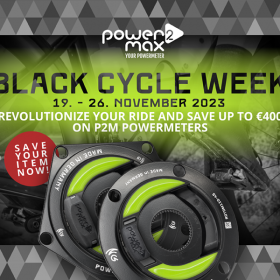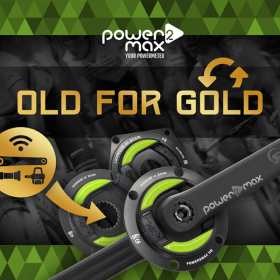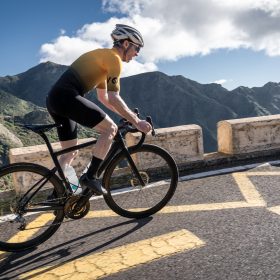Cadence, Aerodynamic Balance and now the tires. Andrés Díaz, our performance expert, gives us an inside into tires, tire pressure and tire width: in his opinion the most undervalued component in cycling and triathlon. The tires of your bike, whether a clincher, tubular or tubeless are the only element of contact between the bike and the surface on which you are riding. It is therefore probably one of the most important components.
All of us want to ride the fastest and lightest bike on the market, the most aero and the stiffest wheels we can afford and the latest helmet but few cyclists really take the tire choice seriously. And even less the correct tire pressure. With some very easy changes you can optimize the performance of your tires and gain watts!
A LITTLE SCIENCE
When we are riding our bikes and the tires are in contact with the ground, they suffer a deformation. It is very easy to see this when we place the rear wheel of our bike onto an indoor trainer or go out for a ride with you friends and watch their tires. This deformation takes energy which is not used to actually move you and your bike forward. As a consequence: The less deformation, the better, since there will be less loss of energy.
The deformation of our tires depends on three factors:
- Tire width
- Composition and manufacture of the tire
- Tire pressure
In this first article we want to focus on the width of a tire only. Composition of a tire and tire pressure will be dealt with in the next article.
TIRE WIDTH
Cycling is and has always been a sport of equipment, technology and theories but sometimes it is very hard to incorporate changes. This is perhaps due to the “emotional” component of cycling. There has always been a struggle between “traditionalists” and modern and scientific approaches to cycling as the current discussion about disc brakes proves.
However, it has always been thought that to go fast it was necessary to have narrow tires and a very high tire pressure. For several years now, this belief has been more than dismantled. In fact, in professional road cycling now you can rarely see a bike with less than 25mm tire width.
I have my own theory of why people still think that narrow, high-pressure tires are faster: When we pedal on the road, no matter how new it is and how well paved it is, there are always micro-irregularities. When we use narrow tires inflated to high pressure those micro-irregularities can be felt as micro-vibrations on the bike and these vibrations make us “feel” fast.
Let’s use an analogy of the motor world (cycling and the motor world are very closely connected). If we drive a Seat Panda (old Spanish car) and the latest Mercedes model both at 100 km/h, in the seat the feeling is like you are going in a space rocket about to take off while in the Mercedes you won’t feel any of that and you think you are going slow.
On a bike many times the “feeling” do not translate into reality. To make sure I did not take wrong conclusions, I kept collecting data for several weeks and the trend remained. The power/speed ratio with the 32mm tires was better than with the 23mm tires.
Nowadays, many of us have a power meter. I encourage you all to try wider tires. Your power meter will tell you if the “feeling” is true or not.
CONCLUSION
The first advice I can give you: choose the widest tire that fits into your frame. Wider tires have a lower rolling resistance and give you more comfort on the road. A 25mm wide tire is probably a good compromise. If there are bad roads or you want more comfort go for a wider tire. There are almost no downsides except some additional weight.
The second advise: Read the next blog about the composition of a tire and tire pressure.



